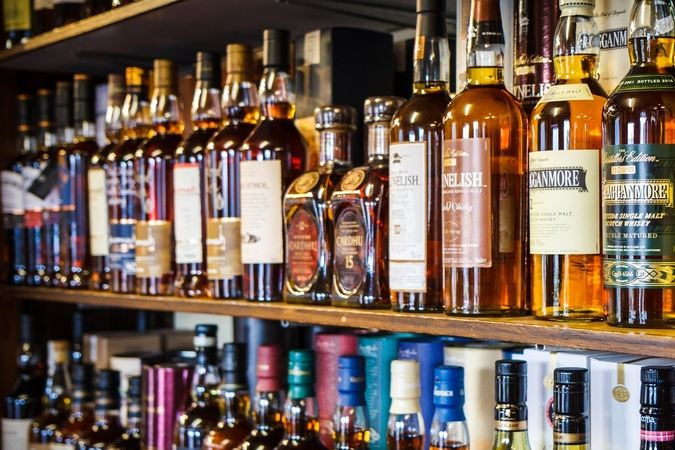The Scottish Government has announced its intention to introduce a fee on all beverage containers in Scotland. SLTA is a member of umbrella group Packaging Recycling Group Scotland (PRGS) that represents a range of companies and associations concerned at the impact such a fee would have on business. Here, PRGS consultant Campbell Evans explores some of the issues such a fee could have for the licensed trade in Scotland.
“A bottle of lager with a piece of lime in it, certainly, but only if you also pay for the bottle”
This could be the conversation between a licensee and a customer in Scotland in the years ahead if the Scottish Government sees through its desire to levy a charge on all beverage containers in Scotland.
The power to introduce a bottle charge in Scotland was passed by Parliament eight years ago in the Climate Change (Scotland) Act 2009. However, the complexity, cost, and disruption to existing waste collection schemes that a deposit return system (DRS) would bring perhaps explains why, until recently, the government has shied away from moving any further towards introducing a DRS.
In September, however, the First Minister announced in the Programme for Government that Zero Waste Scotland would be asked to devise a DRS model. This work is likely to last at least six months, after which there will be a public consultation.
A DRS sounds superficially straightforward – levy a refundable fee on all beverage containers to encourage more recycling and reduce litter. But as busy licence-holders will quickly recognise it’s not that simple.
Every licensed premise would face an immediate price increase and hit to cash flow as, under current government plans, a DRS would apply to every beverage container. Every lager bottle, wine bottle, spirits bottle, mixer, bottle of water, fruit juice, soft drink can, milk carton etc will carry an upfront deposit, likely to be 10-20p on each bottle, can or carton.
Taking the lager bottle scenario at the top of this article could see pubs, restaurants or hotels including the DRS fee in the price of the bottle or mixer. But that would mean putting up prices at a time when the licensed trade is already having a hard time. Oh, and what fun on a busy evening when customers ask for their 10p back on the lager, mixer or wine bottle, or seek to leave with the empty bottle to reclaim the charge elsewhere.
Premises will need to keep separate records for products received, charged to customers and returned under the DRS, and different records for other waste handled by current waste arrangements.
Take glass under a DRS. Beverage containers, typically bottles of beer, wine, spirits and mixers, would need to be kept separate for processing and administrative recording from food jars and sauce bottles.
Licensed premises would receive a small administration fee for each DRS returned on top of reimbursement of the deposit paid upfront. But it is doubtful that this administration fee would come anywhere close to meeting the costs being imposed on the business. Businesses may also have to await verification of returned DRS items before receiving reimbursement of the deposits paid upfront, thereby negatively impacting cash flow.
What’s more, current waste disposal arrangements would still be required for items not captured under the DRS.
Bar and restaurant staff will not escape the impact of DRS when they get home. The convenience of council kerbside collections will be replaced by journeys to shops where bottles and cans can be returned. They can expect queues. One large retailer has calculated that if just 80% of the soft drinks it sells are returned to its stores, it will process one returned item every four seconds, more if the Scottish Government proceeds with plans to include also milk containers and glass in the scheme.
If shoppers increasingly drive to larger stores to return DRS items, as has happened in Germany, might they not also choose to shop in these stores with the possibility that it could encourage more purchases of alcohol for at-home drinking – and fewer visits to the pub?
Scotland differs from countries that already apply a bottle charge. Around 80% of Scottish households benefit from kerbside collections. In Sweden, only 30% of households receive such a service. Norway is often held up as an example of a successful DRS nation yet its overall recycling record is exactly the same as in Scotland, without Scotland having to run a separate costly DRS infrastructure alongside council waste services.
Councils would still have to provide household collections, but they would no longer receive the most valuable items currently collected – bottles and cans – thereby losing revenue for local authorities.
A concern about recycling rates and litter is given as justification for bringing in a bottle and can charge. Yet return rates in Scotland for plastic bottles are rising and have already reached over 70%. Glass recycling is higher than this.
Spending tens, possibly hundreds of millions of pounds to bring in and run a new waste infrastructure scheme that imposes further strain on Scotland’s already under pressure hospitality trade, that inconveniences the public and disrupts local authority collections, does not sound wise or necessary when progress is already being made.
Perhaps that explains why at least 10 European countries have rejected introducing such schemes.

